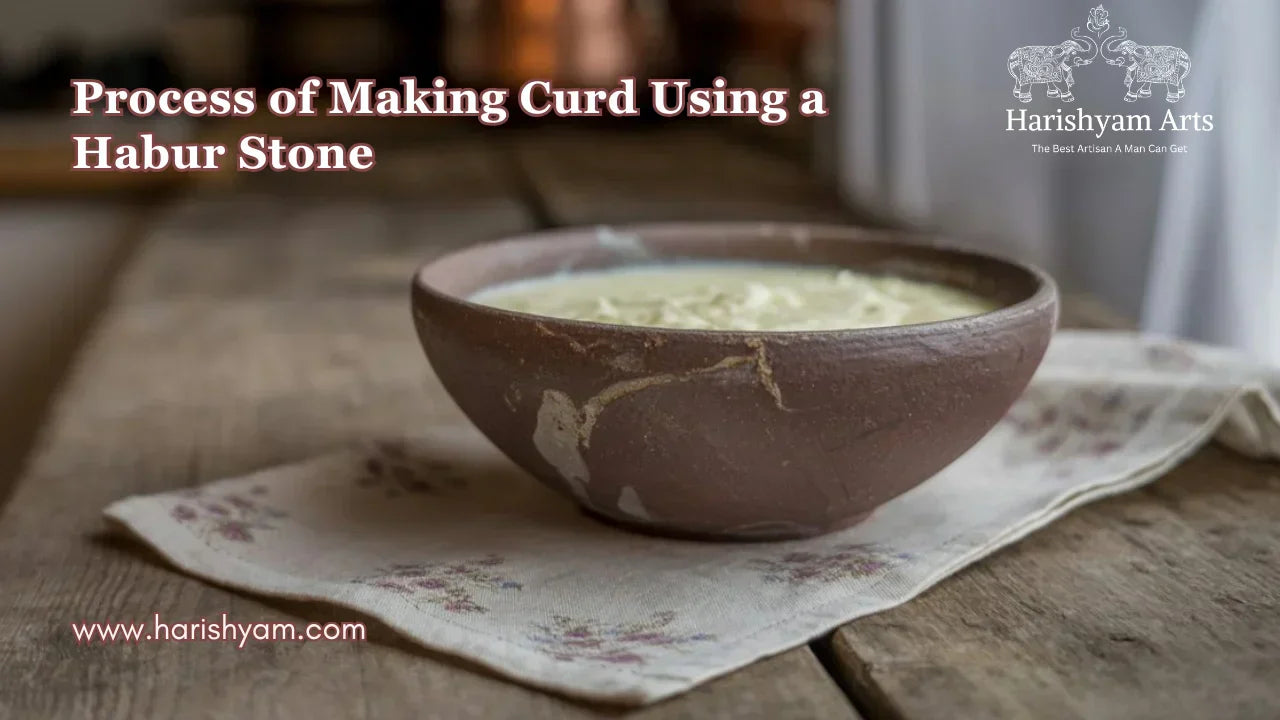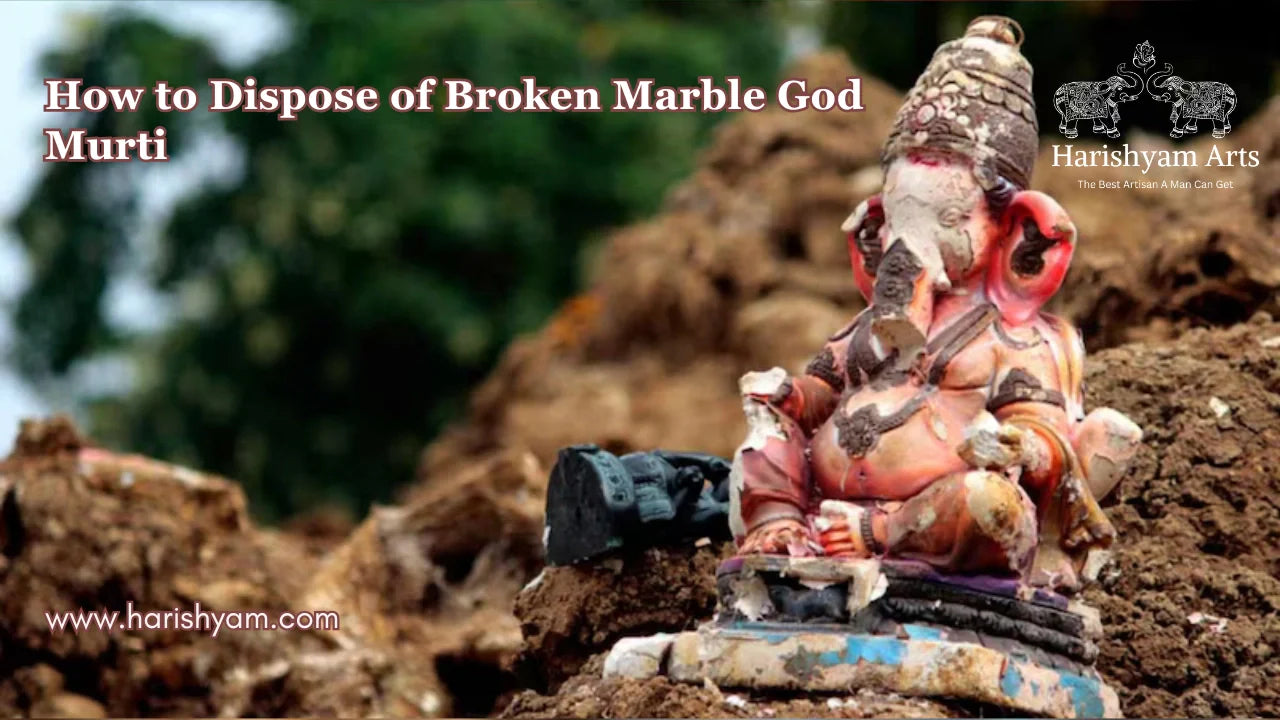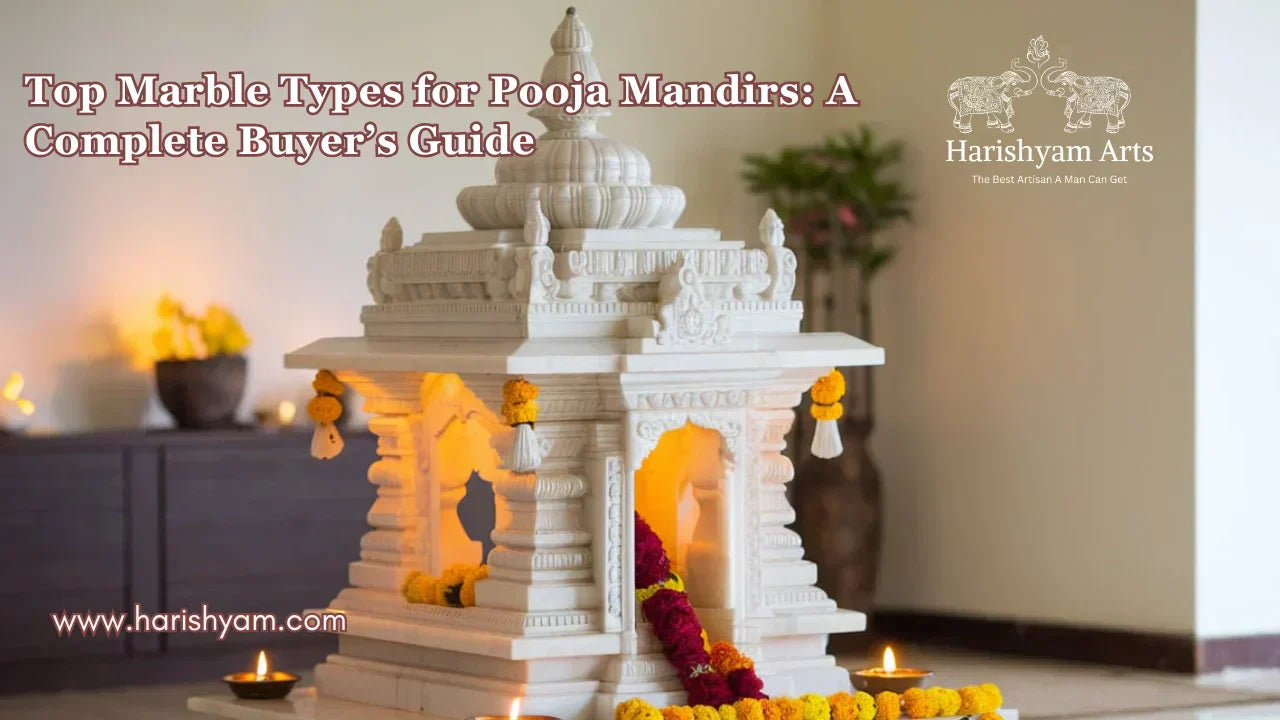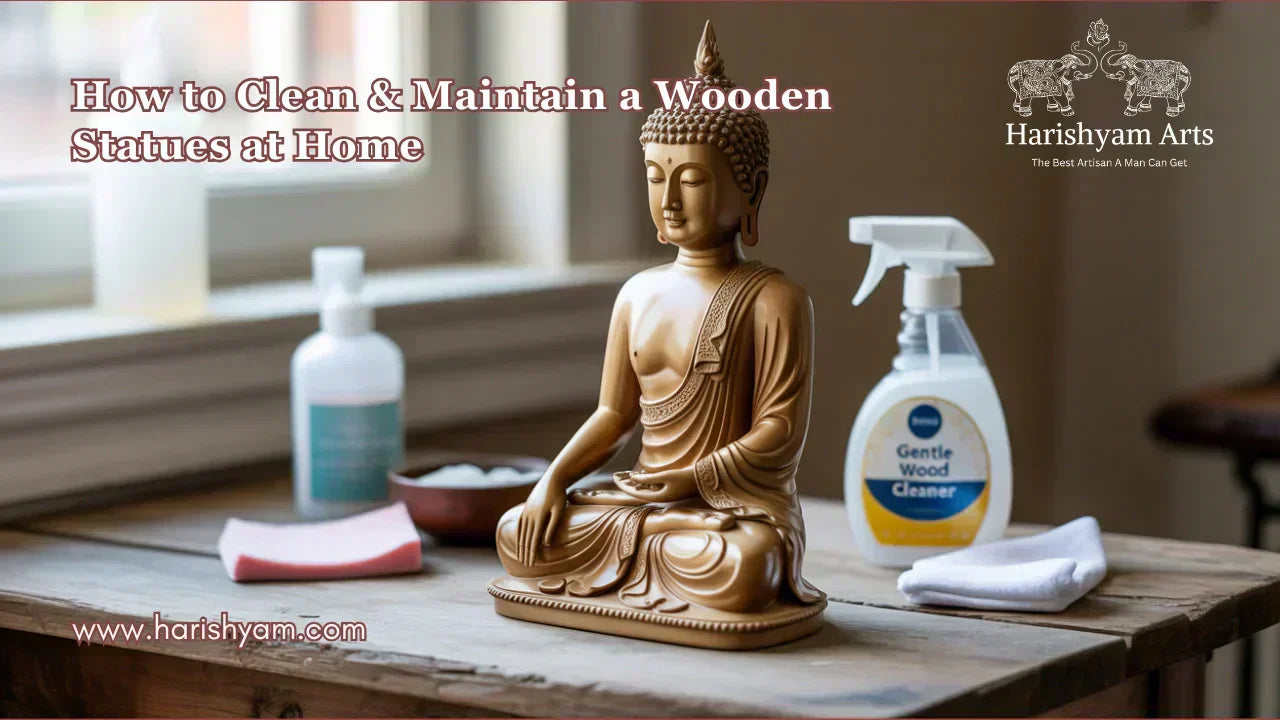Harishyam Arts Blog
How to Make Curd Using Habur Stone
By Lakshay Sharma | On 31 May, 2025 | Views

Curd is a staple in many Indian households, known not just for its taste but also for its health benefits. While modern refrigeration and stainless-steel containers have made curd-making easy, traditional methods using natural materials are making a comeback — and for good reason. One such traditional method involves using Habur Stone utensils, which are known for their unique mineral composition and health benefits. In this blog, we’ll explore how to make curd using Habur Stone, its advantages, and why it’s worth adopting this ancient technique in your home.
What is Habur Stone?
Habur Stone is a rare and natural stone found in the region of Rajasthan, India. It is considered to be rich in minerals and is known for its natural cooling properties. Traditionally used to make utensils like pots, bowls, and even pyramids, Habur Stone has been used for centuries in Ayurvedic practices for its ability to retain natural flavors and enhance food quality.
These utensils are non-toxic, eco-friendly, and known to have a positive effect on food stored or prepared in them, especially fermented items like curd.
Also Read: Learn about the unique Habur stone from Jaisalmer
Can I Turn Milk into Curd Using Habur Stone?
Yes, you can absolutely turn milk into curd using Habur Stone utensils. The stone’s natural mineral content and cool surface make it ideal for the fermentation process. Unlike metal or plastic containers that can either heat up or cool down too quickly, Habur Stone maintains a balanced temperature, helping in the slow and even formation of curd.
Many traditional Indian households still rely on Habur Stone bowls and pyramids to make creamy, thick, and naturally set curd — all without the use of any starter or culture.
Process of Making Curd Using a Habur Stone Utensils
Making curd using Habur Stone is simple and does not require any artificial starter. Here are two effective methods:
1. Using a Habur Stone Bowl or Pot for Making Curd Naturally
For those who value tradition and natural living, setting curd in a Habur Stone bowl or pot is a time-tested method that enhances both taste and health. Habur Stone is a mineral-rich stone known for its natural cooling properties and its ability to promote chemical-free curd fermentation without any added culture.
Here’s a step-by-step process to make curd using a Habur Stone vessels:
Step 1: Boil and Cool the Milk
Start by boiling fresh milk thoroughly to eliminate any impurities or bacteria. After boiling, let it cool down until it reaches a lukewarm temperature — neither hot nor cold. This is the optimal state for natural fermentation to begin.
Step 2: Choose the Right Habur Stone Vessel
Depending on your curd-making needs, you can choose from various Habur Stone utensils, each designed to suit different quantities and preferences:
1. Habur Stone Glass
Ideal for individual servings, the Habur Stone glass is a compact and convenient option for setting small portions of curd. Its natural properties help maintain a balanced temperature, encouraging smooth fermentation. Simply pour lukewarm milk into the glass and loosely cover it with a cotton cloth. Great for daily use and personal consumption.
2. Small Habur Stone Pot with Lid (150–200 ml)
This petite pot is perfect for setting curd for one or two people. The included stone lid helps retain warmth and creates a cozy environment for natural fermentation. Its size makes it especially suitable for setting thick, creamy curd in small batches, while the Habur Stone’s minerals enhance the taste and texture.
3. Large Habur Stone Bowl (600–700 ml, with or without lid)
For families or larger servings, the large Habur Stone bowl is a practical choice. It’s available both with and without a lid, giving you flexibility. If using a lid, it helps maintain internal warmth. If your bowl doesn’t have a lid, simply cover it with a clean, breathable cotton cloth. This bowl is ideal for those who prepare curd regularly in moderate to large quantities, ensuring consistent results every time.
Step 3: Pour and Cover
Pour the lukewarm milk into the chosen Habur Stone bowl, handi, or pot. If your vessel has a lid, cover it gently. If it’s an open bowl, use a cotton cloth or muslin to lightly cover the top. Avoid airtight lids, as curd needs a bit of airflow for proper setting.
Step 4: Let It Rest in a Warm, Shaded Area
Place the vessel in a quiet, undisturbed corner of your home, preferably in a warm place away from direct sunlight or cold drafts. Allow it to rest for 12–15 hours, or overnight, depending on the room temperature. During this time, the natural minerals in the Habur Stone create an ideal environment for good bacteria to flourish, resulting in a perfectly fermented curd.
Step 5: Check and Serve
After 12–15 hours, check the curd — it should have a firm consistency, mild tangy aroma, and creamy texture. Refrigerate if you prefer chilled curd, or enjoy it fresh.
Using a Habur Stone bowl for setting curd not only revives ancient traditions but also delivers a superior quality product. The stone’s natural cooling and probiotic-enhancing properties ensure that your curd is not just tastier but also healthier — without needing any curd starter or additives.
2. Curd Setting Using Habur Stone Pyramid
Many people today are exploring ancient, chemical-free methods of food preparation, and a popular question that arises is: Can we make curd using a Habur Stone Pyramid? The answer is a resounding yes. The Habur Stone Pyramid is not just a beautiful artifact — it is a powerful, energy-enhancing tool traditionally used in Indian households for various health and spiritual practices. When used for natural curd setting, it offers a completely culture-free way to make thick, flavorful curd.
Here’s a step-by-step guide to making curd using a Habur Stone Pyramid:
Step 1: Boil and Cool the Milk
Begin by boiling fresh milk thoroughly. Once boiled, let it cool naturally until it reaches a lukewarm temperature — warm enough to touch but not hot. This is the ideal condition for natural fermentation to begin.
Step 2: Choose a Natural Container
Pour the lukewarm milk into a clean, open bowl — preferably made of earthenware, terracotta, or food-safe ceramic. Avoid plastic or metal containers, as they may interfere with the pyramid’s energy alignment and affect the quality of curd.
Step 3: Submerge the Pyramid in the Milk
Carefully place the Habur Stone Pyramid directly into the bowl of milk, ensuring that the pyramid is fully submerged. The entire structure should be completely dipped beneath the surface. Choose a quiet, undisturbed spot in your home—away from direct sunlight or strong vibrations—to allow the natural minerals and unique shape of the pyramid to infuse the milk with subtle, beneficial energies.
Step 4: Leave It Undisturbed for 15–18 Hours
Allow the setup to rest for 15 to 18 hours, preferably overnight. Unlike methods using curd starters or artificial cultures, this process relies entirely on energy-based fermentation. During this time, the curd slowly forms, developing a rich taste and thick, creamy texture.
Step 5: Ready to Serve
After 15–18 hours, check the curd. You’ll notice it has naturally set, with a firm consistency. You can refrigerate it for a while before serving or enjoy it immediately as a part of your daily meal.
Using the Habur Stone Pyramid for curd making is a perfect example of returning to holistic, traditional food practices. It not only ensures a chemical-free curd but also enriches your diet with the subtle, health-enhancing effects of natural minerals and energies.
Also Read: Habur Stone Benefits & Uses
Benefits of Using Habur Stone for Curd Making
Using Habur stone for curd making is not just a traditional choice—it’s a healthier, more sustainable alternative to plastic or metal containers. Here are some key benefits:
1. Naturally Cooling Properties
Habur stone maintains a naturally cool temperature, which helps curd set perfectly even in warmer climates. This property eliminates the need for refrigeration during the setting process and ensures a smooth, thick texture.
2. Preserves Probiotics Better
The porous nature of Habur stone supports ideal fermentation conditions, helping to preserve and enhance the beneficial probiotic bacteria in curd. This leads to better digestion and improved gut health.
3. No Plastic or Metal Leaching
Unlike plastic or metal containers, Habur stone is completely non-reactive. It does not leach any chemicals or toxins into your food, making it a safe and natural option for everyday use.
4. Adds Subtle Earthy Flavor
Curd set in Habur stone takes on a gentle, earthy flavor that enhances its natural taste. This subtle difference is cherished in many traditional households for its authenticity and wholesome feel.
5. Long-Lasting and Eco-Friendly
Habur stone products are highly durable and reusable, making them an environmentally responsible choice. Their long life reduces waste and the need for frequent replacements.
Overall, curd made in Habur stone not only tastes better but also supports a healthier lifestyle and sustainable living.
Also Read: Health Benefits of Drinking Habur Stone Water
FAQs
1. Is Habur Stone safe for food preparation?
Ans: Yes, Habur Stone is completely safe. It is a naturally occurring stone that is non-reactive and free from harmful chemicals, making it perfect for food storage and preparation.
2. Can I use refrigerated milk to make curd in Habur Stone?
Ans: You can use refrigerated milk, but it must be heated first to lukewarm temperature before adding the curd culture. Cold milk will not ferment properly.
3. Why does curd taste better in Habur Stone?
Ans: The alkaline and mineral content in Habur Stone helps balance the acidity during fermentation, resulting in curd that is less sour and creamier.
4. How do I clean Habur Stone utensils?
Ans: Use plain water or a mild natural cleanser. Avoid harsh detergents, as they can seep into the porous surface. Let the utensil air-dry completely.
5. Does Habur Stone break easily?
Ans: It is relatively soft and can chip or crack if dropped. Handle with care and avoid using metal spoons or sharp objects inside it.
6. Where can I buy authentic Habur Stone utensils?
Ans: You can buy authentic Habur Stone utensils directly from Harishyam Arts, where we offer handcrafted, traditional cookware sourced from skilled artisans in Rajasthan. Shop online with us for genuine, high-quality Habur Stone products delivered to your doorstep.
Conclusion
Using Habur Stone utensils for curd making is not just a culinary choice — it’s a return to our roots and a commitment to healthier living. These natural stone products offer a host of benefits that modern materials simply cannot match.
From their natural cooling effect that aids in perfect fermentation to their ability to preserve probiotics without any chemical interaction, Habur Stone has stood the test of time for good reason. Unlike plastic or metal containers that may leach harmful substances, Habur Stone is completely non-reactive and safe for everyday use.
Moreover, it imparts a subtle, earthy flavor to the curd, enhancing both taste and texture. Its durability, eco-friendliness, and traditional charm make it an excellent choice for conscious households that value sustainability and authenticity. Whether you're following Ayurvedic practices, aiming for a toxin-free lifestyle, or simply want to elevate your curd-making process, Habur Stone is a trusted companion.
At Harishyam Arts, we take pride in offering only genuine, handcrafted Habur Stone utensils sourced with care and crafted with precision. Bring home the legacy of traditional wellness — shop original Habur Stone products today from Harishyam Arts and embrace a healthier, more meaningful way of living.
Curd is a staple in many Indian households, known not just for its taste but also for its health benefits. While modern refrigeration and stainless-steel containers have made curd-making easy, traditional methods using natural materials are making a comeback — and for good reason. One such traditional method involves...

Lakshay Sharma
I’m Lakshay Sharma, a writer with a deep passion for Hindu mythology, Vastu Shastra, and home interiors. I enjoy exploring the rich traditions of Hindu gods and goddesses, sharing insights into Vastu principles, and offering guidance on creating sacred spaces like Puja Mandirs. Through my writing, I aim to inspire harmony and spiritual well-being, blending traditional knowledge with modern perspectives.
Harishyam Arts | Jaipur
Related Blogs

Is It Okay to Hang a Mandir on a Wall? A Complete Guide to Wall-Mounted Temples
Lakshay Sharma | November 23, 2025
In today’s fast-paced world, where urban homes are becoming more compact and s...
Read More...
Who is Parashvanath? The Life and Legacy of Jainism’s 23rd Tirthankara
Lakshay Sharma | November 22, 2025
Faith and spirituality are cornerstones of Indian tradition, and Jainism stand...
Read More...
How to Choose Between Carved and Minimalistic Wooden Mandirs
Lakshay Sharma | November 21, 2025
A home mandir (temple) is far more than just a piece of furniture; it is the s...
Read More...
How to clean silver god idols at home
Lakshay Sharma | November 21, 2025
At Harishyam Arts, we understand the spiritual and aesthetic significance of s...
Read More...
Are Marble Dust Statues Ideal for Your Home Temple? Pros & Cons
Lakshay Sharma | November 19, 2025
When it comes to selecting statues for your home temple, marble dust statues h...
Read More...
Where to Buy Authentic Marble Gods' Moortis in the USA: A Guide for Devotees and Collectors
Lakshay Sharma | November 19, 2025
For devotees and collectors in the USA seeking authentic marble Hindu god moor...
Read More...
Maa Parvati 108 Names in Sanskrit and English: Their Significance, Meaning, and Mantra Power
Lakshay Sharma | November 17, 2025
The Divine Essence of Maa Parvati
Maa Parvati,...
Read More...
8 Guidelines for Setting Up Your Home Mandir with Wooden Murtis: Location, Selection, and Maintenance.
Lakshay Sharma | November 16, 2025
Introduction: The Divine Mother of Strength and Compassion

Who Was Jain Mahavir? The Life, Teachings, and Legacy of the 24th Tirthankara
Lakshay Sharma | November 15, 2025
Lord Mahavir, the 24th Tirthankara of Jainism, was a spiritual reformer who re...
Read More...
Benefits of Choosing Corian Mandirs Over Marble and Wood
Lakshay Sharma | November 14, 2025
Modern homes today demand elegance, functionality, and easy upkeep — and Coria...
Read More...
White vs. Black Shivling: Which One Is Best for Your Home and Why?
Lakshay Sharma | November 13, 2025
The Shivling, a sacred symbol of Lord Shiva, embodies creation, power, and pur...
Read More...
10 Stunning Marble Handicraft Pieces to Elevate Your Home Décor
Lakshay Sharma | November 12, 2025
Marble handicrafts represent timeless artistry, luxury, and devotion. At Haris...
Read More...
Brass Ganesha Idols as Gifts: Symbolism, Occasions, and Gifting Etiquette
Lakshay Sharma | November 11, 2025
Gifting a brass Ganesha idol is more than a gesture—it's a blessing of prosper...
Read More...
Luxury Kids Room Decor Ideas That Turn Every Space Into a Fairytale Dream
Lakshay Sharma | November 10, 2025
Transforming a child’s room into a luxury fairytale dream combines comfort wit...
Read More...
Why Repainting Your Marble Statue Can Extend Its Life and Beauty
Lakshay Sharma | November 09, 2025
Marble statues are elegant pieces of art that add charm to any home or temple....
Read More...
How to Choose the Perfect Wall-Mounted Wooden Mandir for Your Home
Lakshay Sharma | November 08, 2025
A wall-mounted wooden mandir is more than just a spiritual corner; it’s a blen...
Read More...
Understanding GST on Marble God Statues: A Complete Guide for Buyers and Sellers
Lakshay Sharma | November 07, 2025
Marble god statues are a popular choice for temples, homes, and offices due to...
Read More...
Are Wooden Statues Pest-Resistant? How to Protect Your Wooden Idols from Insects and Damage
Lakshay Sharma | November 06, 2025
Wooden statues have been cherished for centuries due to their natural beauty a...
Read More...
Corian vs Wooden Temples: Which One Should You Choose?
Lakshay Sharma | November 05, 2025
Choosing the perfect temple for your home is more than just selecting a design...
Read More...
How Customised Marble Human Bust Manufacturers Bring Personalities to Life
Lakshay Sharma | November 04, 2025
Crafting a marble human bust is so much more than sculpting a likeness—it's ab...
Read More...
The Power of the Hare Krishna Maha Mantra: Awakening Spiritual Bliss
Lakshay Sharma | November 03, 2025
The Hare Krishna Maha Mantra is a sacred chant that ...
Read More...
The 24 Tirthankaras of Jainism: Names, Symbols, and Significance
Lakshay Sharma | November 02, 2025
In Jainism, the Tirthankaras are revered as divine s...
Read More...
Top 25 Space-Saving Wooden Mandir Ideas for Modern Homes
Lakshay Sharma | November 01, 2025
A pooja mandir is the heart of every Indian home — a sacred corner where peace...
Read More...
What Are the 8 Forms of Lakshmi? | Ashta Lakshmi Meaning and Significance
Lakshay Sharma | October 31, 2025
The Divine Essence of Goddess Lakshmi
Goddess La...
Read More...
The Art of Craftsmanship: How Handmade Brass Statues Are Created
Lakshay Sharma | October 30, 2025
At Harishyam Arts, we celebrate the timeless beauty ...
Read More...
How to Dispose of Broken Marble God Murti
Lakshay Sharma | October 30, 2025
In Hindu tradition, marble murtis represent divine presence and spiritual ener...
Read More...
Wooden Statues vs Marble Statues: Which One Should You Choose?
Lakshay Sharma | October 29, 2025
When it comes to decorating your home or creating a sacred space, choosing the...
Read More...
How a Wooden Temple Enhances Positive Energy in Your Home
Lakshay Sharma | October 28, 2025
A home temple isn’t just a decorative corner — it’s the spiritual...
Read More...
Why Lord Krishna is Worshipped in Different Forms Across India
Lakshay Sharma | October 27, 2025
Lord Krishna — the eighth incarnation of Lord Vishnu — is one of the most belo...
Read More...
The Story of Goddess Saraswati: The Embodiment of Wisdom and Knowledge
Lakshay Sharma | October 26, 2025
Among the many deities of the Hindu pantheon, Maa Saraswati Read More...

Top Reasons to Choose Brass Statues for Home Décor and Spiritual Spaces
Lakshay Sharma | October 25, 2025
Home décor today is not only about beauty—it’s about creating a peaceful and m...
Read More...
How long do Corian temples last?
Lakshay Sharma | October 24, 2025
Choosing the right material for a temple at home is important for both aesthet...
Read More...
Why Lord Shiva is Called the Mahadeva – The Supreme God
Lakshay Sharma | October 23, 2025
Hinduism, one of the world’s oldest religions, has a rich pantheon of deities,...
Read More...
Why Corian Temples Are Becoming Popular in Contemporary Homes
Lakshay Sharma | October 22, 2025
In today’s modern homes, interior décor blends tradition with contemporary sty...
Read More...
Dome or No Dome? Choosing the Right Design for Your Home Temple
Lakshay Sharma | October 21, 2025
Creating a sacred space at home is a spiritual investment, and the design of y...
Read More...
Traditional vs Modern Wooden Temples: Which Suits Your Space?
Lakshay Sharma | October 20, 2025
Creating a sacred space in your home is more than just interior décor — it’s a...
Read More...
Top Marble Types for Pooja Mandirs: A Complete Buyer’s Guide
Lakshay Sharma | October 19, 2025
A Pooja Mandir is more than just furniture; it is th...
Read More...
The Different Forms of Shiva Statues and their Symbolism
Lakshay Sharma | October 18, 2025
Introduction to the God Shiva Statue
Lord Shiv...
Read More...
Guide to Choosing the Perfect Wooden Statue for Home and Office Décor
Lakshay Sharma | October 17, 2025
Wooden statues are more than decorative pieces—they are timeless symbols of ar...
Read More...
Understanding the Difference Between Handmade and Machine-Made Brass Statues
Lakshay Sharma | October 16, 2025
Brass statues have been a cornerstone of spiritual and decorative art for cent...
Read More...
Where to Buy Custom Marble Statue Online? A Complete Guide
Lakshay Sharma | October 15, 2025
Marble statues have always held a special place in Indian homes and temples. T...
Read More...
Mistakes You Shouldn’t Make When Purchasing a Home Temple Online
Lakshay Sharma | October 14, 2025
Buying a home temple online can be an exciting experience — especially with so...
Read More...
Mistakes You Shouldn’t Make When Purchasing a Home Temple Online
Lakshay Sharma | October 14, 2025
Buying a home temple online can be an exciting experience — especially with so...
Read More...
How to Clean and Maintain Wooden Statues at Home
Lakshay Sharma | October 13, 2025
Wooden statues add elegance, tradition, and warmth to any home. From intricate...
Read More...
Can We Keep the Lakshmi Statue at Home?
Lakshay Sharma | October 13, 2025
In Hindu tradition, Goddess Lakshmi is worshipped as the divine force of wealt...
Read More...
How to Clean Brass Statues at Home?
Lakshay Sharma | October 12, 2025
Brass statues add a touch of elegance and spirituality to any home. At Harishy...
Read More...
Which Lakshmi Idol is Good for Home? Types, Materials, and Significance
Lakshay Sharma | October 11, 2025
Goddess Lakshmi, the divine symbol of wealth, prosperity, and abu...
Read More...
Is Corian Good for Mandir? A Complete Guide
Lakshay Sharma | October 10, 2025
When it comes to designing a home mandir, choosing t...
Read More...
Different Types of Buddha Statues and Their Meanings
Lakshay Sharma | October 09, 2025
Buddha statues are more than just beautiful decorative pieces—they symbolize s...
Read More...
How to Identify a Real Habur Stone? A Complete Guide
Lakshay Sharma | October 08, 2025
Habur stone, known for its mysterious ability to turn milk into curd naturally...
Read More...



